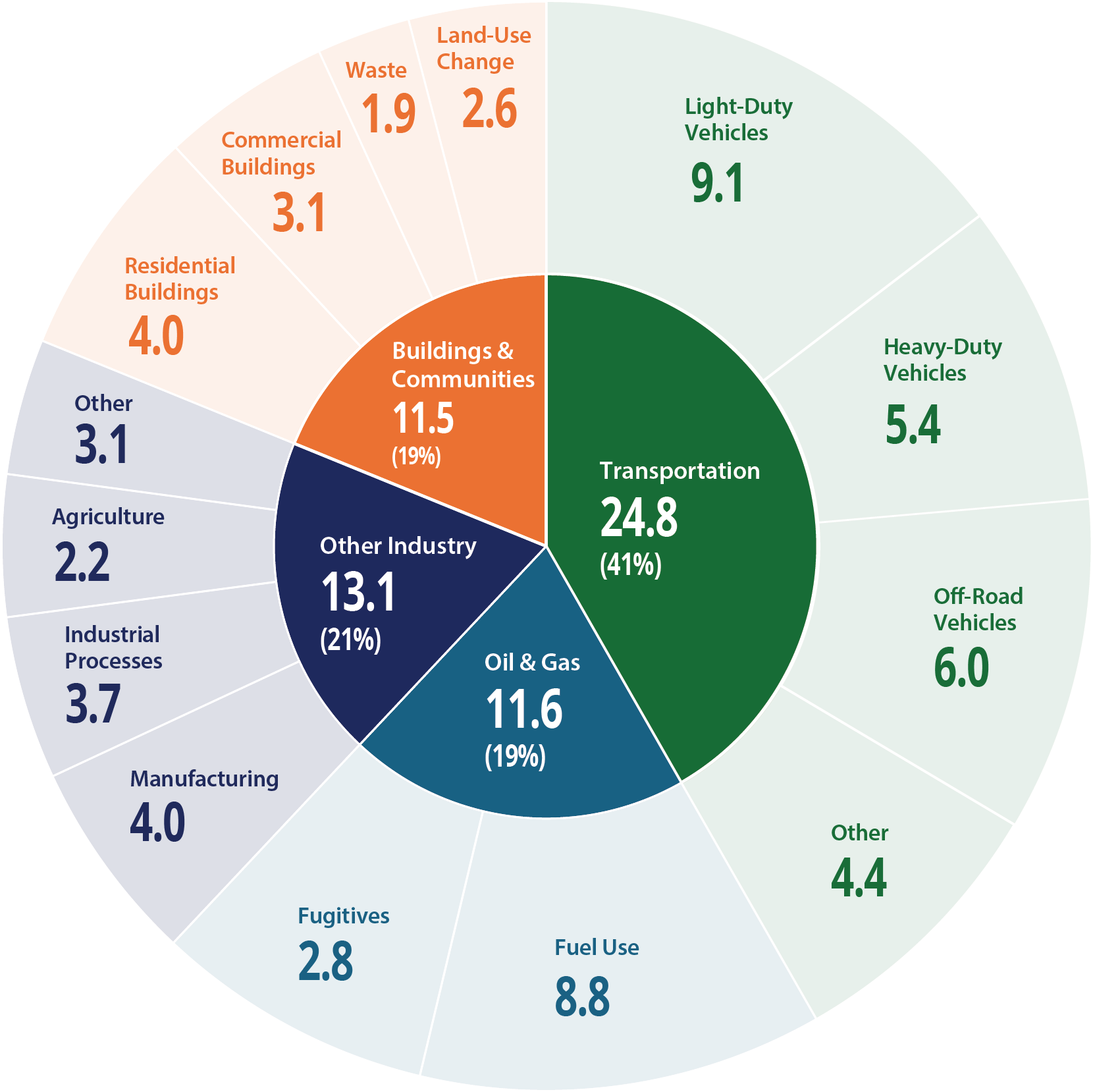Progress to emissions targets
B.C. is working with First Nations, other governments, and many organizations and communities to put CleanBC into action. Progress towards B.C.'s greenhouse gas (GHG) emissions targets is reported annually in the Climate Change Accountability Report.
On this page
B.C.’s 2023 GHG emissions
The latest available 2023 GHG emissions data for B.C., as reported in the Provincial Inventory, is 61.1 million tonnes of carbon dioxide equivalent (MtCO2e). B.C.’s net GHG emissions were 59.2 MtCO2e.
This represents a gross reduction of 2.1 MtCO₂e (3 percent) compared to 2022, and 4.2 MtCO₂e (6 percent) compared to 2007—the baseline year for the province’s emissions targets. Overall, this results in a net reduction of 9 percent from 2007.
Emissions by sector
In March 2021 the Province established 2030 sectoral emissions reduction targets for four sectors, with 2007 as the baseline:
- Transportation: 27-32 percent
- Oil and gas: 33-38 percent
- Other industry: 38-43 percent
- Buildings and communities: 59-64 percent
As part of legislated requirements, government will review these targets by December 31, 2025.
| Sector | 2023 GHG (MtCO2e) | 2023 change from 2007 | GHG categories |
|---|---|---|---|
| Transportation | 24.8 | +7% | Emissions from on-road light-duty vehicles, on-road heavy-duty vehicles, off-road vehicles and other transportation. |
| Oil and Gas | 11.6 | -22% | Emissions from oil and gas extraction, processing and refining as well as transportation emissions from pipelines. |
| Other Industry | 13.1 | -7% | Emissions from industries other than oil and gas related to combustion of fuels at industrial facilities, coal fugitives, industrial processes, as well as those from construction and agriculture. |
| Buildings and Communities | 11.5 | -11% | Emissions from commercial and institutional buildings, residential buildings, waste, and land-use change such as urban and agricultural expansion (afforestation/deforestation). |
B.C.'s gross GHG emissions by sector and sub-sector in 2023 (61.1 MtCO2e total emissions)

Transportation (41 percent of B.C. emissions)
The transportation sector continued to account for the largest share of B.C.’s emissions in 2023. Emissions from transportation were down 4 percent from 2022 but increased 7 percent from 2007 levels. Since 2022, light-duty vehicle emissions declined 4 percent and heavy duty on road emissions declined 7 percent. This is in largely due to significant increases in the use of renewable fuels. Compared to the 2007 baseline year, light-duty vehicle emissions are down 5 percent and heavy-duty on-road emissions are up 10 percent.
Industry (40 percent of B.C. emissions)
Emissions from the industrial sector, encompassing oil and gas and other industries, are down 2 percent from 2022 and 15 percent from 2007 levels. This is partly due to large declines in vented methane emissions from the oil and gas sector (-51 percent since 2007).
Buildings and communities (19 percent of B.C. emissions)
Emissions from buildings and communities were down 6 percent from 2022 and 11 percent from 2007 levels. Building emissions declined by 12 percent in the residential sector and 6 percent in the commercial and institutional sector. Since 2007, waste emissions have gone down by 36 percent because of waste diversion and methane capture.
B.C. calculates GHG emissions for future years using the best available data and real-world trends in fuel prices, economic growth, and technological costs.
Climate-related spending
Learn more about Provincial investments in climate-related initiatives
